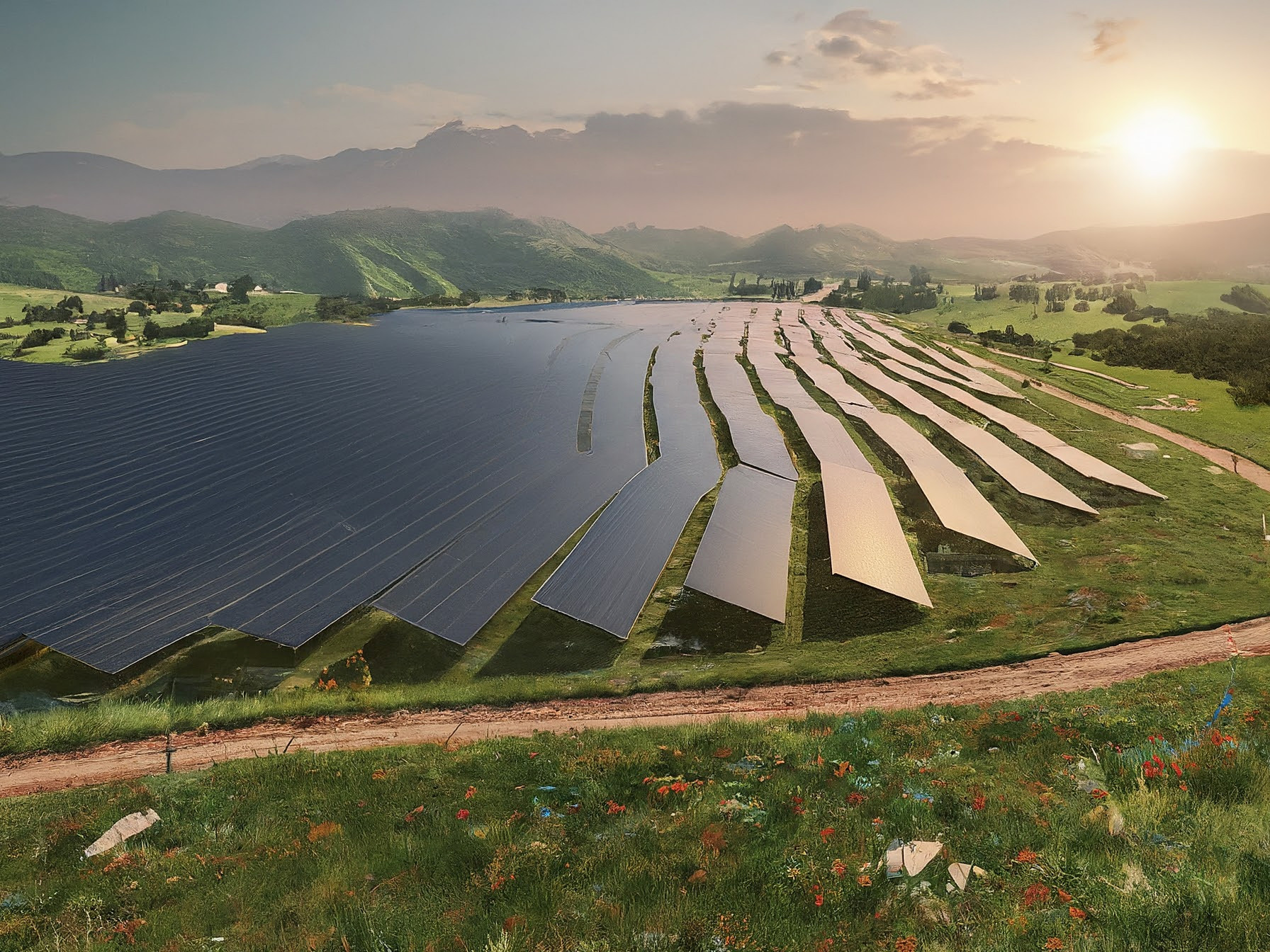India has achieved 50% of its power generation capacity from non-fossil fuels, surpassing its 2030 Paris Agreement target. This milestone is driven by strong policy support and private sector execution, particularly by companies like Adani Green Energy (AGEL). With ambitious expansion plans and a focus on energy storage, India is poised to exceed its climate commitments.
India’s Green Leap: Has Renewable Energy Finally Hit its Stride?
For years, the promise of renewable energy has hovered on the horizon, a shimmering mirage in the face of pressing climate concerns. But something significant just happened in India: the nation now generates half of its power capacity from non-fossil fuel sources. This isn’t just a number; it’s a seismic shift that suggests a fundamental change in the country’s energy landscape.
The buzz around renewable energy has been growing steadily, but reaching this 50% milestone provides tangible proof that India’s commitment to clean energy is more than just rhetoric. We’re talking about a serious transformation, fueled by solar, wind, hydro, and other sustainable sources. Forget incremental progress; this is a bona fide green revolution.
But what does this really mean for India, and for the world?
Decoding the 50% Figure: What’s Powering the Change?
It’s tempting to simply celebrate the headline and move on. But digging deeper, you’ll find the true drivers of this achievement. A major factor is the proactive stance taken by energy developers. Incentivized by government policies and driven by increasingly competitive costs, they’ve been aggressively building out renewable energy infrastructure. Solar power, in particular, has seen explosive growth, transforming vast swaths of land into shimmering arrays of photovoltaic panels. Wind energy, with its established technology and increasingly efficient turbines, also continues to play a crucial role. Hydroelectric power, while facing its own set of environmental considerations, remains a significant contributor to the clean energy mix.

This isn’t just about adding capacity; it’s about fundamentally restructuring the grid. Integrating intermittent sources like solar and wind requires sophisticated grid management, energy storage solutions, and a willingness to embrace new technologies. India has been investing heavily in these areas, building the digital infrastructure needed to support a cleaner energy future.
The Ripple Effect: Impact Beyond Energy
The benefits of this shift extend far beyond simply reducing carbon emissions. Increased renewable energy adoption has a cascade effect, impacting everything from job creation to public health. The renewable energy sector is creating new jobs in manufacturing, installation, maintenance, and research. Many of these jobs are located in rural areas, offering economic opportunities to communities that have historically been left behind.
Furthermore, cleaner energy translates to cleaner air. Reducing reliance on fossil fuels directly improves air quality, decreasing the incidence of respiratory illnesses and improving public health outcomes. This is particularly crucial in India’s densely populated cities, where air pollution is a major concern.
And let’s not forget energy security. By diversifying its energy sources, India reduces its dependence on imported fossil fuels, making it more resilient to global price fluctuations and geopolitical instability.
Challenges on the Horizon: Can India Sustain the Momentum?
While the 50% milestone is undeniably cause for celebration, it’s also important to acknowledge the challenges that lie ahead. Scaling up renewable energy requires continuous investment, technological innovation, and policy support. Land acquisition can be a hurdle, as renewable energy projects often require large tracts of land, potentially leading to conflicts with local communities and environmental concerns.
Furthermore, ensuring grid stability and reliability remains a critical priority. Integrating intermittent renewable energy sources requires advanced grid management technologies and energy storage solutions. Investing in battery storage, pumped hydro storage, and other technologies will be essential to smoothing out the variability of solar and wind power.
Finally, affordability remains a key consideration. While the cost of renewable energy has fallen dramatically in recent years, ensuring that clean energy is accessible to all segments of society is crucial.
What Does This Mean for the Future?
Reaching 50% renewable energy capacity is a landmark achievement for India. It’s a testament to the country’s commitment to clean energy and a clear signal that a sustainable energy future is within reach. But the journey doesn’t end here. Maintaining this momentum requires continued investment, innovation, and a steadfast commitment to sustainability. This success also offers valuable lessons for other nations striving to transition to cleaner energy sources. You might also be interested in learning about India’s growing electric vehicle market to further understand the nation’s commitment to a green future.
This milestone isn’t just about electricity generation; it’s about building a more sustainable, resilient, and equitable future for all. India’s green leap is a powerful reminder that ambitious climate goals are not just aspirational; they are achievable. And this transformation in renewable energy will have lasting global impact.







